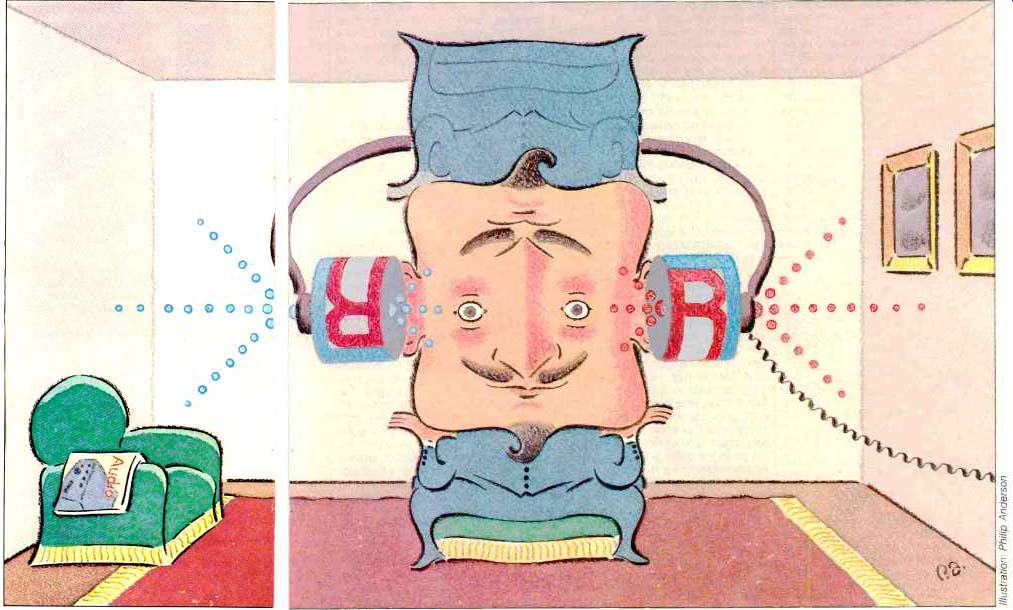
by DR. DIANA DEUTSCH
[Dr. Diana Deutsch has been a member of the research faculty of the University of California, San Diego, since 1970, the year she was awarded a Ph.D in psychology from that institution. She is the founding editor of Music Perception, a journal published by the University of California Press; coauthor (with J. A. Deutsch) of Physiological Psychology (Dorsey Press, 1966; Second Edition, 1973), and editor of The Psychology of Music (Academic Press, 1982). In addition, she is an active member of the Acoustical Society of America and has served on the Advisory Council of the International Association for the Study of Attention and Performance. She is a Fellow of the American Association for the Advancement of Science and of the Society of Experimental Psychologists. Recently made a Fellow of the Audio Engineering Society, she was guest editor for a special issue, entitled "Auditory Illusions and Audio," of the Society's journal (Vol. 31, No. 9, Sept. 1983).]
---- --- --- -
Early on around this magazine, there was a sort of Occam's Audio Razor: "If a piece of gear measures well but sounds bad, it is bad, but if it sounds good and measures poorly, it's a good piece of gear." The idea behind the quasi-motto was to free one's ears, and perception, from the tyranny of meters.
Over the last four decades, lots of midnight oil has been burned trying to make measurements mean something, which usually wound up as an attempt to make gear which already sounded good also measure well. On the hi-fi end of things, at least, not much effort has been spent on what it means to "sound good," or "hear well," or simply "hear." How we hear is an endlessly fascinating subject for some few audiophiles, most of whom know how easily any of the senses--and hearing is no exception-can be fooled. Indeed, stereo sound is an illusion. If, however, you have ever listened to a discussion of how one hears at a hi-fi store, audio club or even a learned society convention, you have already found out how few people are truly knowledgeable in this area.
In an effort to free us from the tyranny that the ear is an infallible judge of sound, I am proud and pleased to present an article, with an illustrative Eva-Tone SoundSheet, by one of the few true authorities in this field, Dr. Diana Deutsch, on what a curious thing it is, our sense of hearing.
-E.P.
---- ---- --- --
In increasingly large numbers, people are choosing to listen to music through stereo headphones. This development has occurred despite the fact that most recordings are not de signed for headphone listening, but rather to be played through loudspeakers. It is a happy coincidence that stereo recordings sound acceptable either way. Yet the creative opportunities provided by headphone listening have only just begun to be explored.
One highly successful use of headphones involves binaural recording. Two microphones are placed at the ears of a dummy, and two very similar recordings are produced from these, differing only as would the sound signals arriving at the ears of a listener situated in the same position. When these recordings are played back through stereo headphones, remark able realism is obtained.
There is, however, another use of stereo headphones which takes us in the direction opposite that of increased realism, to an unexpected and paradoxical world of illusion. Rather than presenting highly similar signals to the two ears, entirely different signals are presented. Effects obtained with this technique are not only startling to experience, but also demonstrate certain properties of the hearing mechanism which might otherwise have passed unrecognized.
Let us begin with a very simple sound pattern, which is illustrated in Fig. 1. A 400-Hz sine-wave tone is de livered to one ear, and at the same time an 800-Hz sine-wave tone is delivered at equal amplitude to the other ear. When this combination lasts for several seconds, most people hear both the high tone and the low one, and can localize them correctly.
Now let us consider a variant of this pattern which I devised. (See Deutsch, D., "An Auditory Illusion," Nature, Vol. 251, 1974, pgs. 307-309.) For the first 250 mS, the 800-Hz signal is presented to the right ear and the 400-Hz signal to the left. The tones then inter change positions, so that for the next 250 mS the 400-Hz signal is presented to the right ear and the 800-Hz signal to the left. The tones then switch back to their original positions, and the procedure is repeated. So, as illustrated in Fig. 2A, each ear receives a pattern that consists of two tones presented in alternation. Yet when the right ear receives the high tone, the left ear receives the low tone, and vice versa.
This pattern is given in Sound Example 1. (Be sure, when listening to this and the other examples, that the loud speakers on your system are turned off, and that the channels are carefully balanced for loudness.) Surprisingly, this simple pattern is almost never heard correctly, and in stead gives rise to a number of illusions. Most people obtain a percept such as illustrated in Fig. 2B. This consists of a single tone which switches from ear to ear; as it switches, its pitch simultaneously shifts back and forth between high and low. In other words, the listener hears a single high tone in one ear which alternates with a single low tone in the other ear.
Clearly, there can be no simple basis for this illusion. We can explain the perception of alternating pitches by supposing that the listener hears the tones presented to one ear and ignores the others. But then we cannot explain why these tones should appear to be switching between ears. Alternatively, we can explain the perception of a single tone which alternates from ear to ear by supposing that the listener is constantly shifting his attention be tween left and right. But then the pitches of the tones shouldn't change with changes in their perceived locations.
The illusion of a single tone that alternates simultaneously both in pitch and in location presents us with a paradox.
The effect becomes even stranger when we consider what happens when the earphone positions are reversed.
The ear that had been hearing the high tone continues to hear the high tone, and the ear that had been hearing the low tone continues to hear the low tone! This creates the peculiar impression that the high tone has migrated from one earphone to the other, and that the low tone has also migrated in analogous fashion. The best way to experience this effect is to switch the earphones around several times while the pattern is playing, and ask yourself each time which ear is hearing the high tone. Most people find that the high tone appears to stay in one ear and the low tone in the other ear, regardless of how the earphones are positioned.
Another interesting thing to try at this point is to begin by listening to the illusion in stereo, and then change the setting to mono, so that both ears now receive both channels. At this point your percept should change dramatically: You should hear a single complex tone coming simultaneously from both earphones, together with clicks occurring four times per second. (The clicks are due to the transients produced by switching the signals between 400 and 800 Hz). Then change the setting back to stereo, and the illusion should reappear. Sound Example 2 presents the pattern in stereo, then in mono, and then in stereo again.
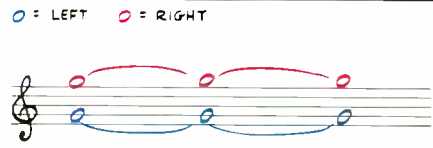
Fig. 1-400-Hz sine-wave tone delivered to left ear and 800-Hz tone to right
ear.
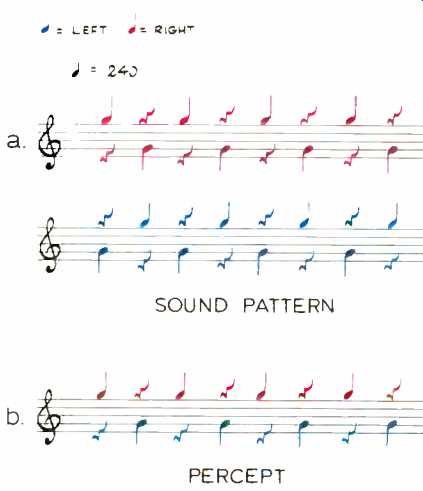
Fig. 2-Octave illusion pattern, with 400- and 800-Hz tones first delivered
to left and right ears, respectively, and then interchanging positions every
250 mS (A); and the most common percept resulting from that pattern (8).
How can we account for this illusion? Clearly, there is no simple explanation.
But if we assume that separate brain mechanisms exist for deciding what sound we hear and for deciding where the sound is coming from, we are in a position to advance an explanation.
The model is illustrated in Figs. 3 and 4. To obtain the perceived pitches, the frequencies arriving at one ear are at tended to, and those arriving at the other ear are suppressed. However, each tone is localized at the ear receiving the higher frequency signal, regardless of whether a pitch corresponding to the higher or the lower frequency is in fact perceived.
Figure 3 illustrates the model for the case of a listener who perceives the pitches corresponding to the frequencies delivered to his right ear. When a high tone is delivered to his right and a low tone to his left, he hears a high tone, because this is delivered to his right ear. He also localizes the tone in his right ear, because this ear is receiving the higher frequency. But when a low tone is delivered to the right ear and a high tone to the left, he now hears a low tone, because this is delivered to his right ear, but he localizes the tone in his left ear instead, because the left ear is receiving the higher frequency. So he hears the entire sequence as a high tone to the right which alternates with a low tone to the left. You can see that reversing the earphone positions wouldn't change this basic percept (the sequence would simply appear to be offset by one tone). However, Fig. 4 illustrates the same model for the listener who perceives the pitches corresponding to the frequencies delivered to his left ear instead, using the same localization rule. You can see that the identical pattern is now heard instead as a high tone to the left alternating with a low tone to the right.
In order to test this hypothesis, I devised a new pattern, illustrated in Figs. 5 and 6. You can see that one ear receives three high tones followed by two low tones, while simultaneously the other ear receives three low tones followed by two high tones. This basic pattern is repeatedly presented, with out pause. It was found that, indeed, most people perceived a pattern of pitches corresponding to the frequencies presented either to the right or to the left. That is, they heard a repeating pattern that consisted either of three high tones followed by two low tones, or of three low tones followed by two high tones. Also in confirmation of the model, each tone was localized in the ear receiving the higher frequency, regardless of whether a pitch corresponding to the higher or lower frequency was in fact perceived.
So when a low tone was heard, it appeared to be coming not from the earphone which was in fact delivering it, but from the opposite earphone.
When a listener who heard the pitches delivered to his right ear was presented with channel A to his right and channel B to his left, as shown in Fig. 5, he heard three high tones to his right alternating with two low tones to his left. When the earphone positions were reversed, as shown in Fig. 6, this listener now heard two high tones to his right alternating with three low tones to his left! So the procedure of reversing the earphone positions appeared to cause the channel to the right to mysteriously drop a high tone and the channel to the left to mysteriously add a low tone! (See Deutsch, D. and P. L. Roll, "Separate 'What' and 'Where' Decision Mechanisms in Processing a Dichotic Tonal Sequence," Journal of Experimental Psychology: Human Perception and Performance, Vol. 2, 1976, pgs. 23-29.) There is yet another surprising aspect to this illusion: Right-handers and left-handers differ statistically in terms of where the high and the low tones appear to be localized. In one study, had people listen to this pattern with earphones positioned first one way and then the other. Most right-handers heard the high tone on the right and the low tone on the left, with earphones placed both ways. But left-handers didn't show this tendency.
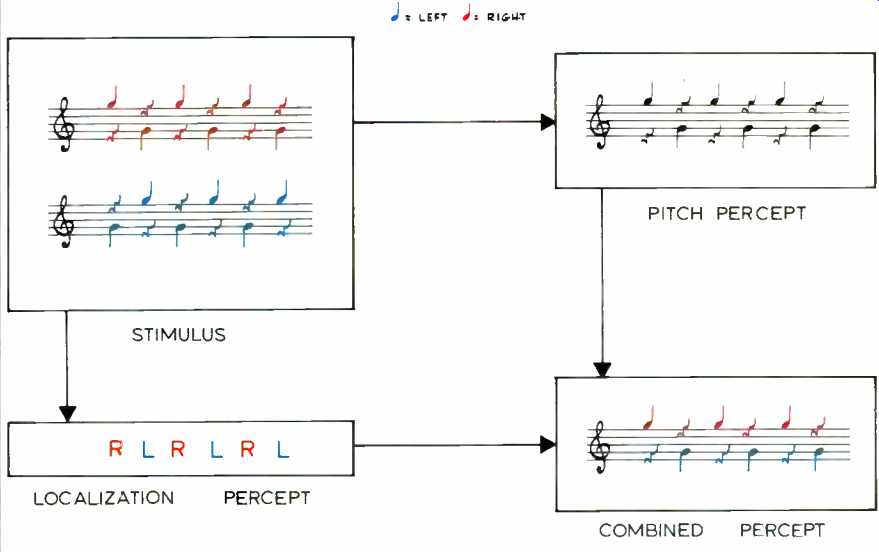
Fig. 3-Perceived pitch and localization for "right-eared" listener.
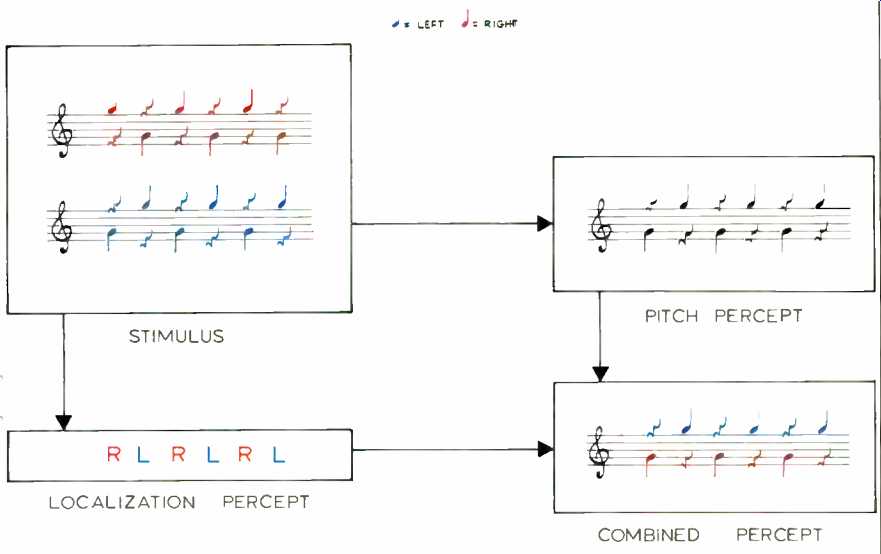
Fig. 4-Same as Fig. 3 but for "left-eared" listener.
In a more extensive study, I divided the population of listeners into three groups on the basis of handedness, Using the Varney and Benton handedness questionnaire shown in Fig. 7.
People scoring at least nine out of 10 "rights" were designated right handers, those scoring at least nine out of 10 "lefts" were designated left handers, and those with eight or fewer "lefts" or "rights" were designated mixed-handers. Each group was then further divided into two on the basis of whether or not the listener had a left- or mixed-handed parent or sibling.
This six-way division was found to correlate with how the octave illusion was perceived. Right-handers were more likely to hear the high tone on the right than were mixed-handers, and mixed-handers were more likely to do so than were left-handers. And for all three handedness groups, those with out left- or mixed-handed parents or siblings were more likely to hear the high tone on the right than were those with left- or mixed-handed parents or siblings. (See Deutsch, D., "The Octave Illusion in Relation to Handedness and Familial Handedness Background," Neuropsychologia, Vol. 21, 1983, pgs. 289-293.) How do these findings relate to the organization of the brain in relation to handedness? In the large majority of right-handers, the left hemisphere of the brain is dominant (i.e., speech is processed primarily in this hemi sphere). But this is true of only about two-thirds of left-handers, the remaining one-third being right-hemisphere dominant. We also know that people with left- or mixed-handers in their immediate family are less likely to have a pattern of dominance typical of right handers than those with only right-handers in their family. So this pattern of results indicates that we tend to localize the tones in this illusion in accordance with our patterns of hemispheric dominance.
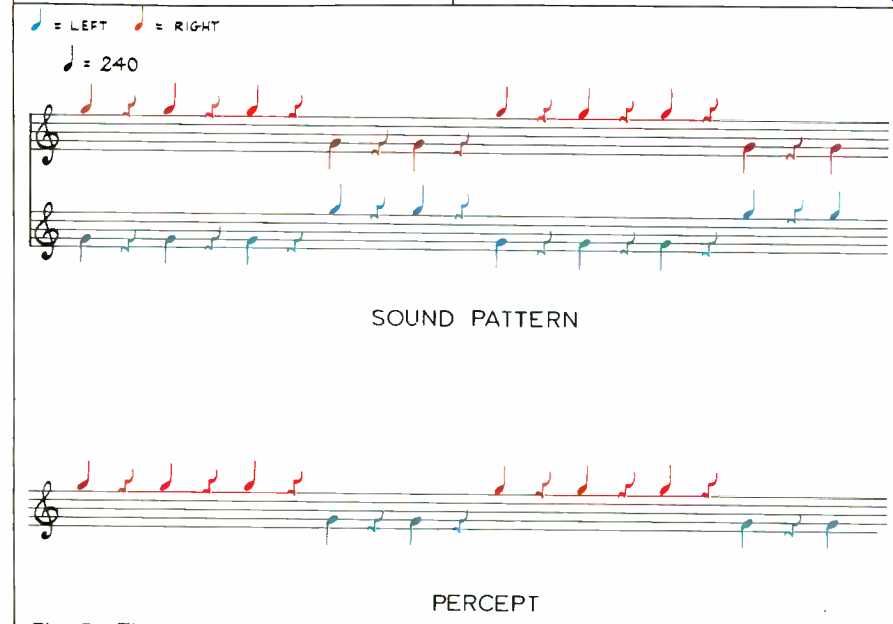
Fig. 5-Three high tones followed by two low tones delivered to right ear,
simultaneous with three low tones followed by two high tones delivered to
left ear.
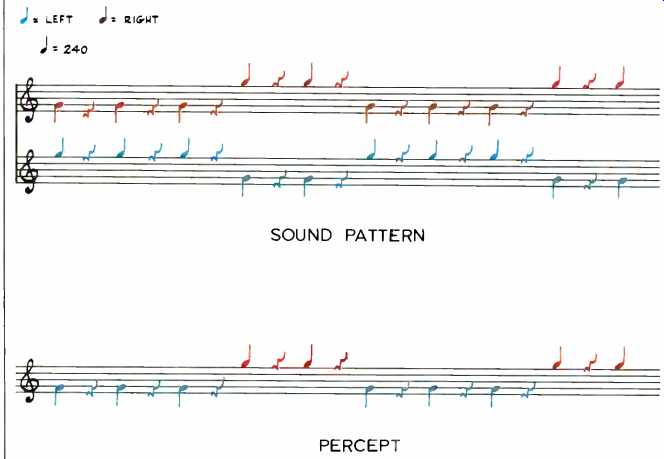
Fig 6-Same as Fig. 5 but with earphone positions reversed.
Now, the perception of a single high tone in one ear which alternates with a single low tone in the other ear is most commonly obtained. But some people experience quite different illusions.
Some hear a single tone which switches from ear to ear, and whose pitch either remains the same or changes only slightly as the tone appears to shift in location. Other people obtain a number of different complex percepts, two of which are illustrated in Fig. 8.
For example, one person might hear a low tone which alternates from ear to ear and whose pitch shifts back and forth by a semitone, together with an intermittent high tone in one ear. Another person might hear a high tone alternating from ear to ear, with an intermittent low tone in one ear. Yet other people find that the pitches of the tones appear to change with continued listening. Large differences in timbre or sound quality are sometimes de scribed; for example, the high tones may have a flute-like quality and the low tones a gong-like quality. Complex percepts of the illusion are typically unstable, so a person may pass from one to another within a few seconds and describe the pattern as constantly changing its character. A considerably higher proportion of left handers obtain complex percepts than do right-handers. This second handedness correlate is probably based on another relationship between handedness and brain organization. It concerns the degree to which one hemi sphere of the brain is dominant over the other. In right-handers, there tends to be a pronounced dominance of the left hemisphere, but in left-handers, patterns of dominance tend to be less pronounced.
The illusion is sometimes perceived in a way that is analogous to the perception of ambiguous figures in vision.
As illustrated in Fig. 9, the high tone may first be heard on the right and the low tone on the left. Then after a few seconds, the high tone will switch to the left and the low tone to the right.
After a few more seconds, the tones will interchange positions again, and so on. In a similar way, if we scrutinize the Necker cube of Fig. 10, it will appear to switch back and forth in orientation, so that the front face periodically changes places with the back one.
If you consistently hear the high tone on the right and the low tone on the left when the stereo channels are in balance, you might find that you can achieve a "Necker cube" percept in stead by gradually altering the balance so as to increase the amplitude of the signal to the left ear relative to the right.
At some stage, the high tone will suddenly appear to switch to the left and the low tone to the right. Having reached this stage, shift the balance back a little so as to reduce the amplitude of the signal to the left ear, until the tones appear to return to their original locations. By shifting the balance back and forth in this way, you may find a point of equilibrium at which the tones will appear to spontaneously interchange locations in space.
Playing with the octave illusion in this fashion is rather like scrutinizing some of Escher's woodcuts. Take, for example, his "Regular Division of the Plane III," shown in Fig. 11. In the uppermost portion of this picture, the black horse men clearly provide the figure and the white horsemen the ground. In the lowermost portion, this situation is re versed. But in the middle, there is a region of ambiguity in which your perception alternates between these two interpretations.
What happens when the pattern is played at different speeds? Sound Ex ample 3 presents the pattern first at the original tempo of four tones per second. Then the tempo is gradually in creased to 20 tones per second, and finally it is slowed down to one tone every four seconds. You can hear the illusion sharpen as the tempo is in creased, and gradually deteriorate as the tones are played more slowly. At the slowest tempo, both of the simultaneously sounded tones may be heard.
We may next ask what happens when the alternating tones are not in octave relation. Sound Example 4 presents the pattern with tones related by a minor third. You can hear that the impression is quite different, though an illusion is still produced.
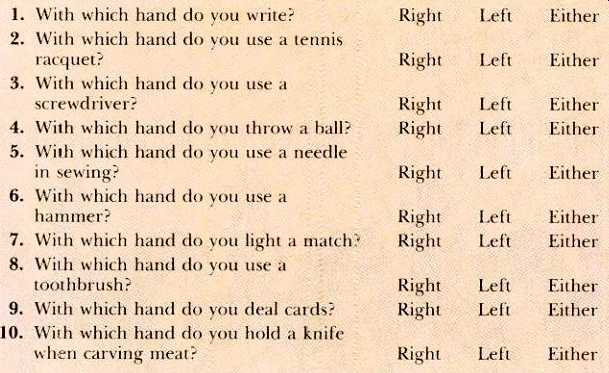
Fig. 7-Varney and Benton handedness questionnaire.

Fig. 8-Two alternative percepts obtained from octave illusion pattern.

Fig. 9-Possible instability of percept obtained from octave illusion pattern.

Fig. 10-Necker cube, illustrating instability of visual percept.
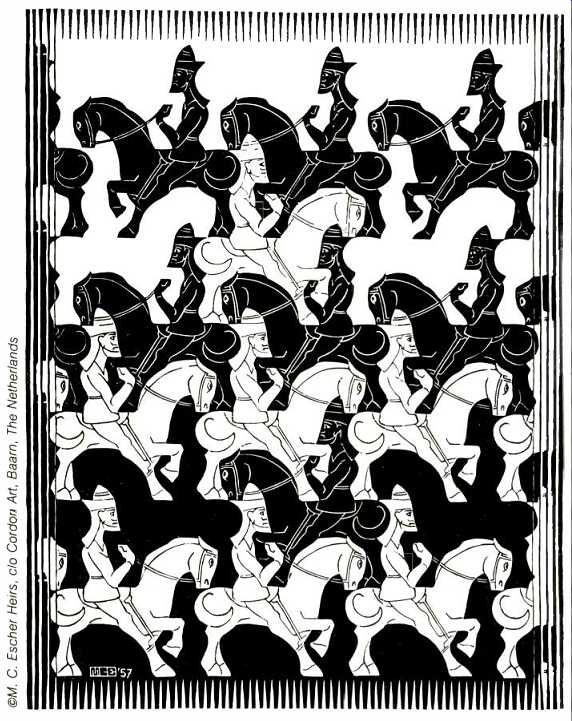
Fig. 11-Escher woodcut, "Regular Division of the Plane Ill," illustrating
ambiguity of visual percept.
What happens when the sounds are presented through loudspeakers rather than earphones? One experiment to investigate this question was per formed in an anechoic chamber. The listener was first positioned so that one speaker was exactly on his right and the other exactly on his left, as shown in Fig. 12. When the octave illusion was played, a high tone appeared to be coming from the speaker on the right, and it appeared to alternate with a low tone coming from the speaker on the left. As the listener turned slowly, the high tone remained on his right and the low tone on his left. When, however, the listener came to face one speaker, with the other exactly behind him, the illusion abruptly disappeared; a single complex tone was heard instead, as though coming simultaneously from both speakers. But as he continued to turn, the illusion abruptly reappeared, with the high tone still on his right and the low tone on his left. In other words, after he had turned 180°, it appeared as though the speaker that had been producing the high tone was now producing the low tone, and that the speaker that had been producing the low tone was now producing the high tone! The effect also works in certain non anechoic environments, though the acoustics of normal rooms can de grade the illusion considerably. The following demonstration is, however, generally very successful: Begin by listening to the pattern with earphones in their usual position. Then, while the pattern is playing, slowly remove the earphones and bring them out in front of you, as illustrated in Fig. 13. If you obtain a clear and consistent illusion in the first place, you will probably find that you can bring the earphones out a considerable distance before the effect disappears. There is another point of interest here. Once the illusion is lost, it is necessary to return the ear phones considerably closer (if not right back onto your ears) before it is recaptured.
What happens if, instead of two alternating tones, we present a more elaborate pattern? To examine this, question, I devised the pattern shown in Fig. 14A and given in Sound Example 5. You can see that this consists of a major scale whose successive tones alternate from ear to ear. The scale is played simultaneously in both ascending and descending form; when a tone from the ascending scale is in one ear, a tone from the descending scale is in the other ear. Figures 14B and 14C show the ascending and descending components separately, and you can see that the pattern shown in Fig. 14A is produced by the superposition of the patterns shown in Figs. 14B and 14C.
This sequence is played repeatedly without pause. (See Deutsch, D., "Two-Channel Listening to Musical Scales," Journal of the Acoustical Society of America, Vol. 57, 1975, pgs. 1,156-1,160.) This scale pattern also produces a number of different illusions. The one most commonly experienced is illustrated in Fig. 14D. A perceptual reorganization occurs such that a melody corresponding to the higher tones appears to be coming from one ear phone, and a melody corresponding to the lower tones appears to come from the other. When the earphone positions are reversed, the higher and lower tones usually maintain their apparent locations. So again, the procedure of reversing the earphone positions appears to cause the higher tones to migrate from one earphone to the other, and the lower tones to migrate in analogous fashion.
The ways in which the higher and lower tones are heard again correlate with handedness. Right-handers tend to hear the higher tones on the right and the lower tones on the left, but left handers don't show this tendency.
Some people hear only the higher tones, and little or nothing of the lower tones. Interestingly, among those who hear only the higher tones, a larger number are able to localize them correctly.
The scale illusion often works well with sounds presented through stereo- phonically separated loudspeakers in normal room environments. You may want to listen to Sound Example 5 this way, making sure you are situated roughly equidistant from the two loud speakers. Whether or not the spatial effect works convincingly in your environment, you should certainly experience a perceptual reorganization of the melodic lines, such that when the channels are played together in stereo, the melodies that you hear are quite different from those that you hear when each channel is played separately.
Variants of the scale illusion can easily be produced. For instance, Sound Example 6 presents a two-octave major scale pattern, switching from ear to ear (or from loudspeaker to loudspeaker) in the same way as before. This pattern is illustrated in Fig. 15. When the two channels are played together in stereo, most people hear a higher scale which moves down an octave and back, and they simultaneously a lower scale, which moves up an octave and back, with the two meeting in the middle. But when you play each channel separately, the tones are in stead heard to be jumping around over a large pitch range. Sound Example 7 presents another variation, a one-octave chromatic scale which alternates from ear to ear in the same fashion, as shown in Fig. 16. As yet another vari ant, Sound Example 8 presents a two-octave chromatic scale which alternates in the same fashion. This example is illustrated in Fig. 17. For all these variants (as well as for the original illusion), it is interesting to listen to each channel separately, and then to gradually equalize the balance of the channels and experience the two melodic patterns transforming into different ones.

Fig. 12-Octave illusion using loudspeakers, with speakers exactly to left
and right of listener (A), with speakers exactly in front of and behind listener
(8), and after listener has turned 180° (C).
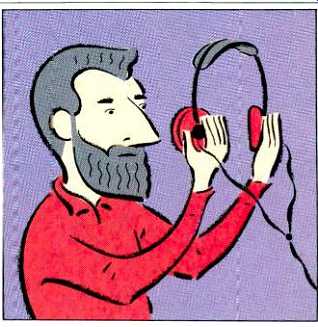
Fig. 13-Octave illusion can be sustained even with earphones in front of
listener.
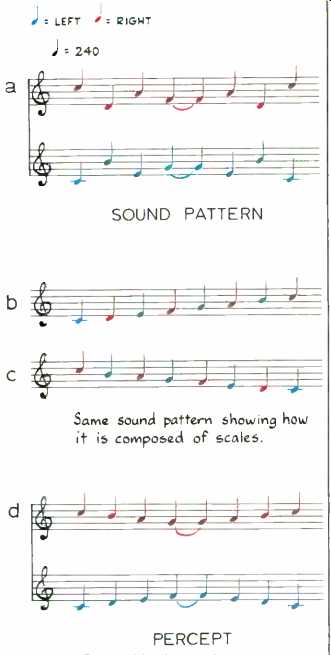
Fig. 14-Scale illusion using one-octave major scale. Sound pattern delivered
to right and left ears (A), based on ascending and descending scales (8 and
C), produces an illusory percept (D).

Fig. 15-Scale illusion using two-octave major scale.
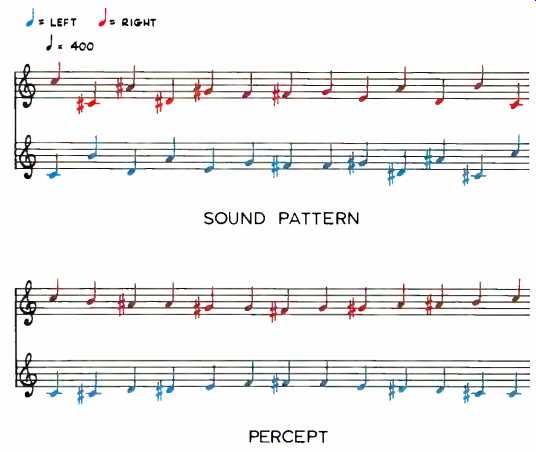
Fig. 16-Same as Fig. 15 but using one-octave chromatic scale.
Similar effects can even occur in listening to live music. Figure 18 shows a passage from the last movement of Tchaikovsky's Sixth Symphony. As you can see, the theme is formed of notes which alternate between the first and second violins, while the second voice alternates in converse fashion. A similar arrangement holds for the viola and cello parts. However, the voices are generally heard instead as illustrated on the right side of Fig. 18. It remains a mystery whether Tchaikovsky intended to create an illusion here, or whether he expected listeners to hear this pas sage as in the written score.
Why should we experience this illusion? Because of the complexity of our sound environment, we cannot rely on classical localization cues alone (such as differences in amplitudes and arrival times at each ear) to determine the locations of simultaneously presented sounds. Therefore, other cues must also be taken into consideration. One such cue is similarity of frequency spectrum: Similar sounds are likely to be coming from the same source, and different sounds from different sources. So with patterns such as we have been considering, it makes sense to conclude that tones in one frequency range are coming from one source, and that tones in another frequency range are coming from a different source. We therefore perceptually re organize the tones on the basis of this interpretation.
There is an interesting visual analog of this effect. In Fig. 19, we see a photograph of a hollow mask, taken from the inside. Although the features of the face, such as the nose, are projecting inward, away from us, we perceive the face as projecting outward, towards us. Our expectations that faces should project outward are so strong that we perceive this picture quite incorrectly. Further, we continue to do so despite our conscious knowledge of the illusion.
So far, we have been considering cases where the sounds presented through the two earphones (or loud speakers) are simultaneous. What happens when time differences are introduced? In one experiment, I devised two simple melodic patterns and asked listeners to identify on each trial which one they had heard. The pat terns are shown in Figure 20.
In one condition, the tones comprising the patterns were presented to the two ears simultaneously, as shown in Fig. 21A. Under these circumstances the patterns were easy to identify, and performance on the task was very good. Ina second condition, the tones were switched haphazardly between the ears, as shown in Fig. 21B. As can be heard in Sound Example 9, the switching procedure made the task much more difficult. Most people found that their attention was directed to the sounds coming from one earphone or the other, and it was very difficult for them to integrate the two into a coherent melody.
A third condition (Fig. 21C) was exactly as the second, except that the melody was accompanied by a drone.
Whenever a tone from the melody was in the right ear, the drone was in the left ear, and whenever a tone from the melody was in the left ear, the drone was in the right ear. So sounds were again presented to both ears simultaneously, even though the melody was still switching from ear to ear, exactly as before. As can be heard in Sound Ex ample 10, the presence of the drone in the opposite ear caused the sounds to merge perceptually, so that the melody could easily be identified. Performance in this condition was again very good.
In a fourth condition, shown in Fig. 21D, a drone again accompanied the melody, but it was presented to the same ear as the melody component.
This meant that input was again to one ear at a time. As you can hear in Sound Example 11, it was again very difficult to integrate the different sounds. (See Deutsch, D., "Binaural Integration of Melodic Patterns," Perception and Psychophysics, Vol. 25, 1979, pgs. 399-405.)
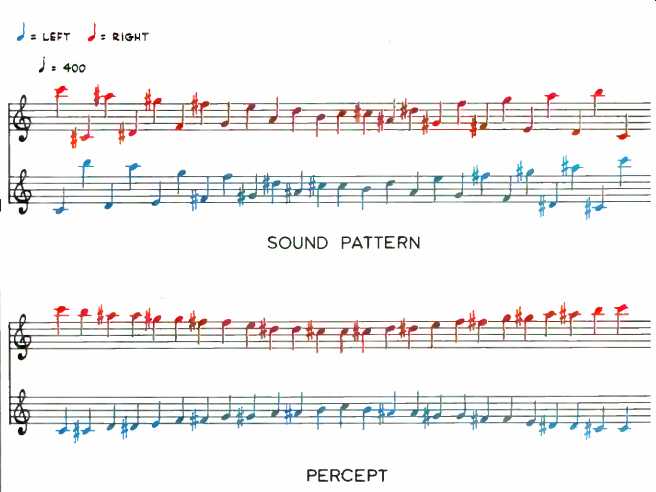
Fig. 17-Same as Fig. 15 but using two-octave chromatic scale.
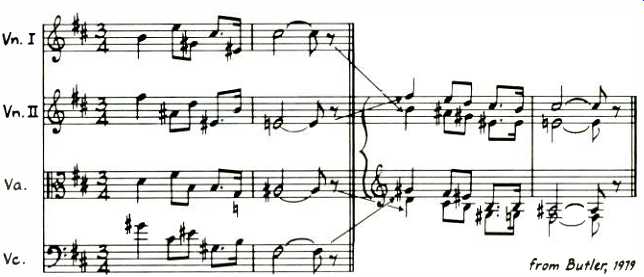
Fig. 18-Passage from last movement of Tchaikovsky's Sixth Symphony, showing
separate parts for first and second violin, viola, and cello (left), and
how these parts are usually perceived (right).
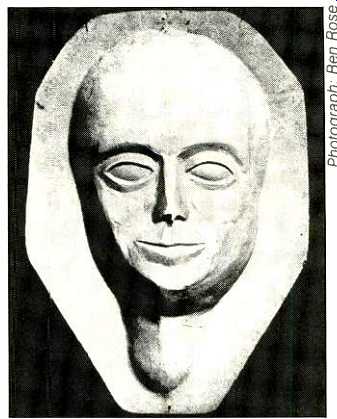
Fig. 19-A visual example of perceptual rearrangement: Hollow mask appears
to project outward.
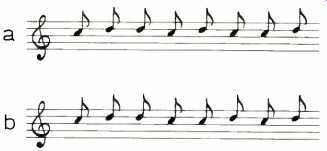
Fig. 20-Simple melodic patterns used to examine effects of time differences
on perception.
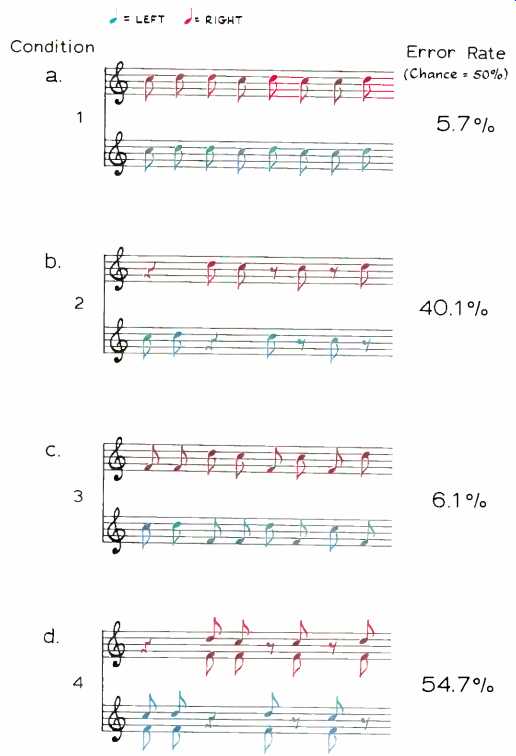
Fig. 21-Patterns of Fig. 20, with tones presented to two ears simultaneously
(A), switching haphazardly between ears (B), switching haphazardly and accompanied
by a drone in the opposite ear (C), and switching haphazardly and accompanied
by a drone in the same ear (D).
This experiment shows that when signals are coming from two different locations, temporal relationships between them are important determinants of how they are perceptually grouped together. When both ears receive input simultaneously, integration of patterns is easy. But when sounds arriving at the two ears are clearly separated in time, we instead focus attention on one ear or the other, and find it much more difficult to combine the two into a single perceptual stream.
What happens in the intermediate case, where the signals to the two ears are not strictly synchronous, but in stead overlap in time? In a further experiment, I found that this intermediate case produced intermediate results.
Identification of the melody with a strictly synchronous drone in the opposite ear was easiest. Next easiest identification of the melody was with an asynchronous drone, while the worst results were with no drone.
Why should the perceptual system function in this fashion? Temporal relationships between sound signals provide important cues as to whether they are coming from the same source or from different sources. So we should expect that the more clearly signals at the two ears are temporally separated, the more we should treat them as coming from separate sources, and so the more we should tend to group them by spatial location. If such grouping were strong enough, it should prevent us from linking together sounds arising from these different sources.
To place these findings in a more general context, we may note that the composer Berlioz has argued for the compositional importance of spatial arrangements. As he wrote in his Treatise on Instrumentation:
-------
I want to mention the importance of the different points of origin of the tonal masses. Certain groups of an orchestra are selected by the composer to question and answer each other; but this design becomes clear and effective only if the groups which are to carry on the dialogue are placed at a sufficient distance from each other. The composer must therefore indicate in his score their exact disposition. For instance, the drums, bass drums, cymbals, and kettledrums may remain together if they are employed, as usual, to strike certain rhythms simultaneously. But if they execute an interlocutory rhythm, one fragment of which is given to the bass drums and cymbals, the other to kettledrums and drums, the effect would be greatly improved and intensified by placing the two groups of percussion instruments at the opposite ends of the orchestra, that is, at a considerable distance from each other.
------
The experiments that we have been describing indicate that spatial arrangements of instruments should in deed have profound effects on how music is perceived. When a rapid pat tern of tones is distributed between two sets of instruments, and these tones are clearly separated in time, we may be unable to integrate them so as to form a coherent melody. If, however, the tones overlap in time, such integration is more readily achieved. But there is a trade-off: As the temporal overlap is increased, our ability to identify the locations of the different sounds de creases, and when the tones are simultaneous, spatial illusions tend to occur.
Let us finally return to the question of how perception of simultaneous tones is affected by whether the higher tone is to the right and the lower to the left, or vice versa. As we have seen in the octave and scale illusions, right handers tend to hear the higher tones on the right and the lower tones on the left, regardless of their actual locations. So combinations of the "high right/low-left" type tend to be correctly localized, and combinations of the "high-left/low-right" type tend to be mis-localized. Other recent experiments have shown this to be true in more general settings also. And in further study I found that, in addition, there is an advantage to the "high right/low-left" disposition in terms of how well the pitches of the tones are perceived. (See Deutsch, D., "Dichotic Listening to Melodic Patterns and Its Relationship to Hemispheric Specialization of Function," Music Perception, Vol. 3, 1985, pgs. 127-154.) Now, to the extent that effects of this sort occur in listening to live music, we may advance the following line of reasoning. In general, seating arrangements for contemporary orchestras are such that, from the performers' point of view, instruments with higher registers tend to be to the right, and instruments with lower registers to the left. As an example, Fig. 22 shows a seating plan for the Chicago Symphony, viewed from the rear of the stage. In the string section, the first violins are to the right of the second violins, which are to the right of the violas. These are: in turn, to the right of the cellos, which are to the right of the basses. In the brass section, the trumpets are to the right of the trombones, which are to the right of the tuba. Notice also that the flutes are to the right of the oboes, and the clarinets to the right of the bassoons. The same general principle holds for choirs and other singing groups. Since it is important that the different performers in an ensemble should be able to hear each other as well as possible, we may conjecture that this type of arrangement has evolved by trial and error because it is conducive to optimal performance.
But this presents us with a paradox. Since the audience sits facing the orchestra, as shown in Fig. 23, this left-right disposition is, from their point of view, mirror-image reversed: Instruments with higher registers are now to the left, and instruments with lower registers to the right. So from the audience's standpoint, this arrangement is such as to cause perceptual difficulties. In particular, instruments with low registers which are to the audience's right should tend to be poorly perceived and localized.
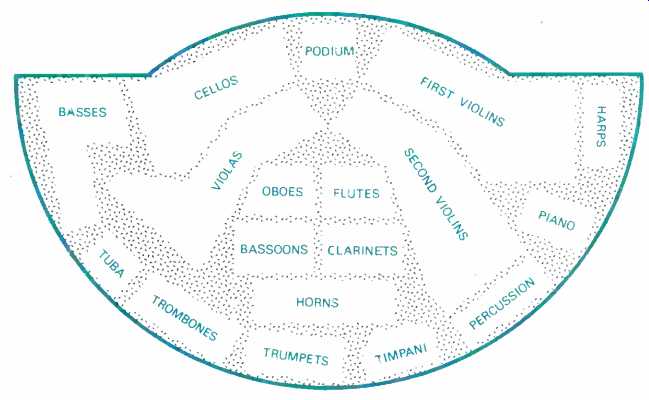
Fig. 22--Seating plan for Chicago Symphony, as viewed from rear of stage.
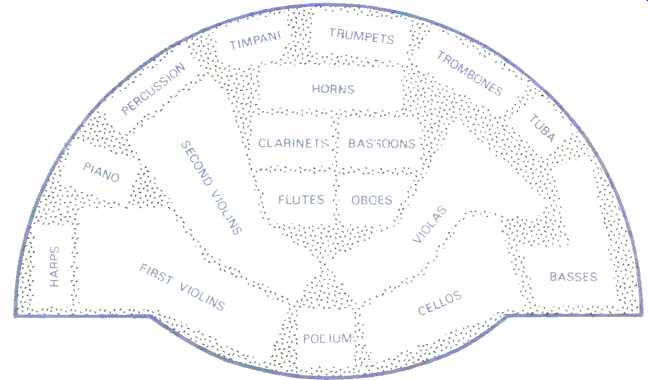
Fig. 23--Same as Fig. 22 but as viewed from audience.
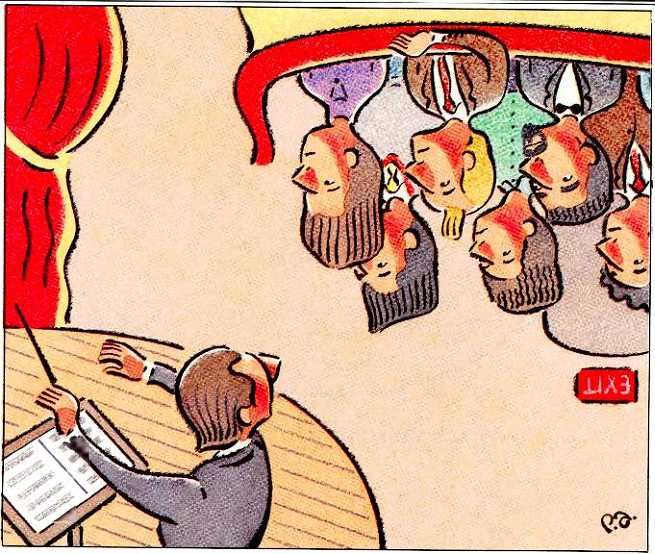
Fig. 24--One way to optimize the left-right arrangement of an orchestra,
both for the players and the audience.
It is not at all clear what can be done about this. We can't simply mirror-image reverse the orchestra, because then the performers wouldn't be able to hear each other so well. Suppose, then, that we turned the orchestra 180 degrees, as a whole, so that the players had their backs to the audience. This wouldn't provide a solution, because then the brasses and percussion would be closest to the audience, and so would drown out the strings. Sup pose, then, that we "retrograde-inverted" the orchestra so that they had their backs to the audience, with the brasses and percussion farthest away and the strings the closest. This wouldn't provide a solution either, be cause then the conductor wouldn't be able to hear the strings, and so wouldn't be able to conduct efficiently.
One solution (suggested by my colleague Robert Boynton) would be to leave the orchestra as it is, but have the audience hanging upside-down from the ceiling! (See Fig. 24.) This solution is, however, unlikely to be popular with concert-goers! On the other hand, for the case of sounds re produced in stereo, an obvious suggestion presents itself: Try reversing the channels on your system. This solution is not without its drawbacks; the music won't sound the same as in con cert halls, and the arrangement will be unfamiliar even as a reproduction. But you may want to try the experiment anyway.
Finally, I should mention that most of the perceptual effects described here occur even though the listener has full information as to what the sound pattern really is. There are other cases in listening to music, however, in which prior knowledge of the music has a profound influence on how it is perceived. One such effect, which I originally demonstrated using the tune "Yankee Doodle," is particularly striking. If you play a well-known melody, but displace its individual notes at random into different octaves, people will be unable to recognize the melody unless they are given clues on which to base a hypothesis (such as its rhythm, its contour, and so on). But if you give the listener the name of the melody beforehand, this problem essentially disappears. (See Deutsch, D., "Octave Generalization and Tune Recognition," Perception and Psychophysics, Vol. 11, 1972, pgs. 411-412.) Sound Example 12 presents another well-known melody, with its tones placed haphazardly in different octaves in this fashion. Listen to this ex ample, and try to identify the tune.
Then listen to Sound Example 13, which presents the same melody with out the octave-randomizing transformation. Finally, listen to Sound Example 12 again, and you will find that the melody is now much easier to follow.
This little experiment can also easily be performed by anyone with access to a musical instrument. Make sure, though, that you don't give your subjects any hints as to what the melody is, and that you scramble the octaves very well, or they might recognize the melody on the basis of a small part that was left intact. Also, choose a melody that is as free of rhythmic cues as possible, or they might be able to make the right guess on the basis of the rhythm alone. If you follow this procedure, it's pretty sure to work!
Additional Reading
Berlioz, H., Treatise on Instrumentation, I. Strauss, editor, and T. Front, translator (E. F. Kalmus, 1948).
Butler, D., "Melodic Channeling in a Musical Environment," presented at the Research Symposium on the Psychology and Acoustics of Music, Kansas, 1979.
Deutsch, D., "Auditory Illusions, Handedness, and the Spatial Environment," Journal of the Audio Engineering Society, Vol. 31 (1983), pgs. 607-622.
Deutsch, D., "Musical Illusions," Scientific American, Vol. 233 (1975), pgs. 92-104.
Deutsch, D., "The Processing of Pitch Combinations," The Psychology of Music, D. Deutsch, editor (Academic Press, New York, 1982).
Machlis, J., The Enjoyment of Music, Fourth Edition (Norton, New York, 1977).
Varney, N. R. and A. L. Benton, "Tactile Perception of Direction in Relation to Handedness and Familial Handedness Background," Neuropsychologia, Vol. 13 (1975), pgs. 449-454.
Zangwill, O L., Cerebral Dominance and Its Relation to Psychological Function (Oliver and Boyd, Edinburgh, 1960).
(Source: Audio magazine, Mar. 1987)
Also see:
Build a Passive Image Enhancer (Nov. 1986)
Headphones around the house (May 1974)
Headphones: History and Measurement (May 1978)
Headphones--How they Work (May 1982)
A History of Binaural Sound (Mar. 1986)
The Filter in out Ears (Sept. 1986)
Build a Passive Image Enhancer (Nov. 1986)
Build a Stereo Headphone Amp (May 1983)
= = = =